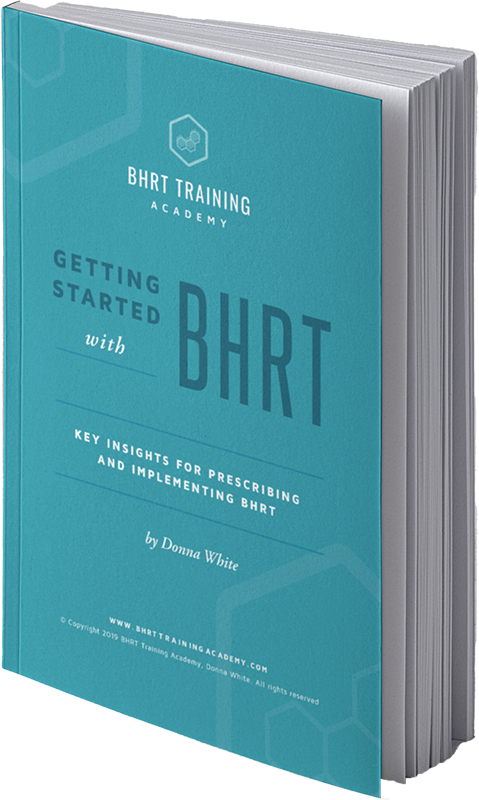Customizing Women’s Healthcare with Compounded Medications: Part 1

Compounded medications are a great choice when:
- Their current therapy isn’t working
- The cost of medication is simply cost prohibitive
- Your patients struggle with medication compliance
- Their current medications are currently on backorder
- Your patient is experiencing too many unwanted side effects
- They have a condition that would benefit from custom, individualized medications
- Combination medications would better serve the patient with multiple mechanisms of action in one dose
Vaginal Dryness, Vulvar & Vaginal Atrophy
Vaginal dryness and atrophy are common conditions that can occur throughout the various stages of a woman’s hormonal life, including post-childbirth, breastfeeding, birth control use, perimenopause, menopause, and after chemotherapy.
Estradiol is the only commercially available estrogen and is considered the “gold standard” for vaginal dryness and atrophy. Unfortunately, commercial estrogens can be very expensive if your patient does not have insurance or has high copays. Medicare currently does NOT pay for any vaginal estrogens.
Compounded options are available and are much more affordable for your patients. Your patients will thank you for saving them hundreds of dollars for this much-needed therapy.
Compounders and functional medicine practitioners often prefer Estriol over Estradiol for vaginal issues. Estradiol can be too intense for some women. Estriol is a gentler estrogen with receptors in vaginal tissue and may be a better option for some women.
Vaginal Itching
Vaginosis, vaginitis, and vaginal itching are prevalent women’s health conditions causing inflammation or infection of the vulva and vagina. Causes can be bacterial vaginosis (BV), yeast (Candida), or parasitic (Trichomoniasis).
Vaginosis occurs when the vaginal pH or the normal balance of yeast and bacteria flora is altered. Both imbalances can cause significant discomfort and itching for patients.
Vaginitis is caused by a change in the balance of the normal yeast and bacteria flora in the vagina. This imbalance can cause persistent itching. In addition, the lining of the vagina can become inflamed due to antibiotic use, spermicides, douching, sexual intercourse, hormonal changes common during pregnancy, breastfeeding, menopause, and infections.
Compounded medications such as boric acid and vitamin c suppositories are shown to help. Vaginal creams such as Miconazole 2% + Lidocaine 2%, Ketotifen 1% vaginal gel, and Naltrexone 0.5%-1% vaginal cream may provide the relief your patients need.
Bacterial Vaginosis
Vaginal acidity is crucial for a healthy vagina. A normal vagina will have a pH of 3.5-4.5. Things that can alter vaginal pH include:
- Stress
- Oral contraceptives
- Irritants
- Yeast
- New partner (sperm is alkaline)
One of the easiest ways to ensure an acidic vaginal environment is to use probiotics specific to vaginal health. Lactobacillus acidophilus vaginal probiotics are great for the prevention of BV. Broad-spectrum Lactobacillus probiotics are available over-the-counter (OTC) and may be needed for chronic conditions. If unresolved, Boric Acid suppositories may be helpful for patients as they can help restore proper vaginal pH and function as an anti-bacterial and anti-fungal agent.
If vaginosis becomes bacterial, there is usually a grey discharge with a fishy odor, which must be treated with antibiotics. Antibiotics can be combined by a compounding pharmacy to offer better treatment outcomes if commercial medications are not addressing the problem.
Compounded medication options include a mixture of:
- Metronidazole 0.75% + Clindamycin 1%-2% vaginal cream
- Metronidazole 125mg + Nystatin 25,000u vaginal cream
- Clotrimazole 10% + Clindamycin 1%-2% vaginal cream
Resistant Yeast
An acidic environment keeps bacteria and yeast from taking up residence in a healthy vagina. Conversely, when the vagina becomes more alkaline, there is a greater chance of an overgrowth of yeast.
Yeast infections are common during hormonal fluctuations, including:
- Ovulation
- Pregnancy
- Menstruation
- Antibiotic use
- After intercourse
- Use of spermicides
- Times of high stress
- Vaginal douches and perfumed products
- The transition from perimenopause to menopause
- Use of oral contraceptives, especially high estrogen pills
- High blood sugar, high insulin levels, and high sugar consumption
Compounded options include Amphotericin B 50mg, vaginal suppositories, and Boric Acid 600mg + EDTA vaginal gel 0.5%.
Low Libido and Lack of Arousal
The most important aspect of addressing low libido is hormonal balance. If you’re already doing that through BHRT and hormones are balanced, look at additional factors like stress and fatigue.
Supplements for Stress and Fatigue:
- L-theanine, GABA, and 5-HTP can help balance neurotransmitters and stress.
- Ashwagandha (Indian Ginseng) is an adaptogen used for stress. It can help improve libido by assisting women in feeling more relaxed. Also helps with sleep.
- B vitamins are depleted with stress. A high-quality B complex can improve energy levels.
- Magnesium (and Progesterone) can help women relax and improve sleep.
Compounders across the country have offered Libido creams for years. These sexual enhancement creams are often referred to as “cuddle cream,” “dream cream,” or “scream cream.” Libido creams contain medications that increase blood flow and vasodilate vaginal tissues offering the patient more sensitivity and intensity of orgasms. Libido creams work best for patients who desire sex, are well-balanced hormonally, and do not have much stress. However, libido creams are not “magic.” Patients under high amounts of stress, on medications that decrease libido, have hormonal imbalances, or have severe health conditions may not respond to libido creams.
Some compounded options include:
- Arginine 6% + Papaverine 0.2%
- Sildenafil (Viagra) at 1%-4% as an additional vasodilator
- Peppermint or Menthol for a cooling sensation
Inability to Orgasm
Oxytocin is commonly known for its essential role in labor and breastfeeding and is released during both. Oxytocin is also our bonding or LOVE hormone. It is released during breastfeeding but also during sexual activity and orgasm.
Oxytocin levels can also be increased by hugging, laughing, being in nature, playing with children or a pet, and spending time with friends and people you love. Oxytocin helps balance out high Cortisol levels…we all need more oxytocin in our lives! It’s one of our happy hormones.
It is possible to supplement oxytocin using compounded medications:
- Oxytocin nasal spray (40u/1ml) 5ml
- Oxytocin 10iu sublingual tablets
- Oxytocin 40iu/gram vaginally
Just the Beginning
This is only a tiny fraction of how compounding medications can serve your clients. Instead of the “one size fits all” approach that conventional medications take when treating a condition, the beauty of compounding is the ability to customize treatment for each person. If no two people are the same, why should their treatment be?
This blog post is based on a Master’s Level Training presented by Pam Bramlett, RPh. These training sessions are included for all students in the BHRT Provider Training Program.
If you’re interested in learning about female compounds or how BHRT can benefit your patients, schedule a call with our Provider Education Specialist. And check back next month for Part 2 of this series because we’ve barely scraped the surface of how compounds help your patients feel better and rediscover their wellness and vitality.

Get the quick read ebook,
Getting Started with BHRT -
Key Insights to Prescribing and Implementing BHRT.
CME's - Earn while you learn.
